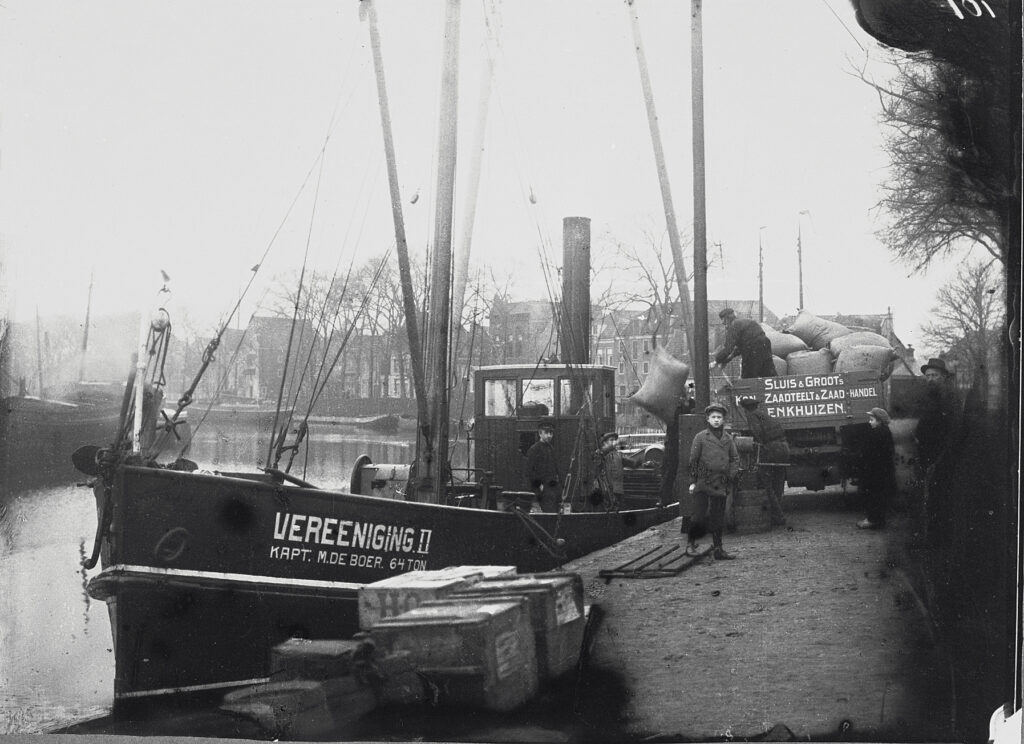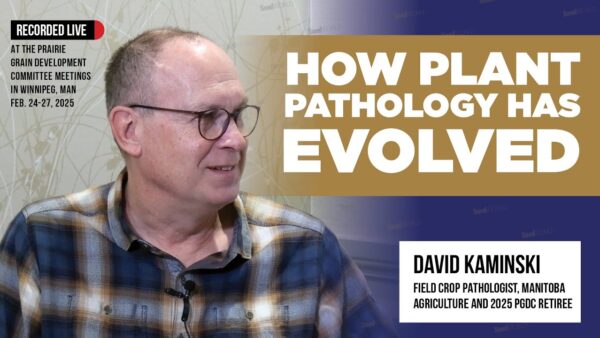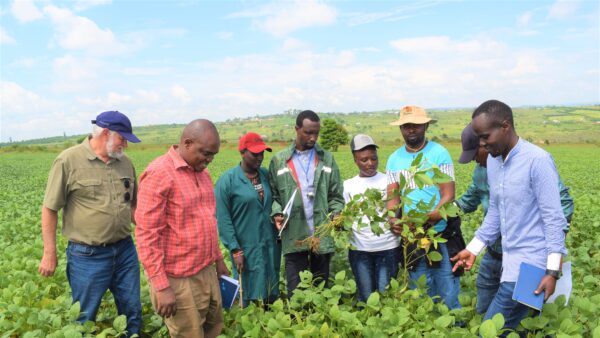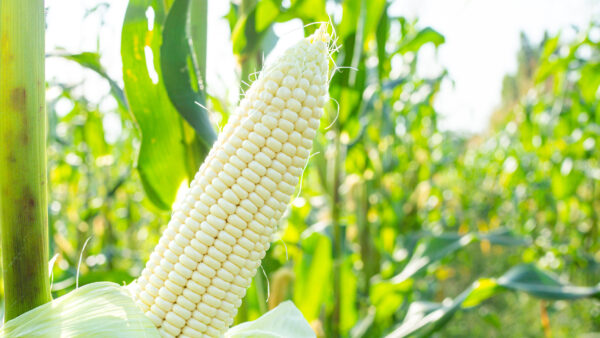Part 2: 2000-2024 and beyond
WHY IT MATTERS: The International Seed Federation (ISF) celebrates 100 years of operation in 2024. The centennial anniversary is an excellent opportunity to look at the future of ISF. Looking at the past can sometimes help. So, let’s have a look at how the Fédération Internationale du Commerce des Semences (FIS)/ISF evolved from its initial origins. The book that was published will be available during the 2024 ISF World Seed Congress. Here we look more specifically at the evolution of the roles of ISF over time. This history can very well be split into four almost equal phases. These represent four distinct, major 25-year eras in world history – and within ISF.
This article is Part 2 of a two-part series. Part 1 looked at the start of the Federation in 1924 and followed its developments through three phases all the way to the turn of the Millennium. The first phase (1924-1949) regulated the sector; the second (1949-1974) represented it in the emerging international organisations, and the third (1974-1999) was about responding to changes within the sector due to technological developments.
In this article, Part 2 of the series, we look at ISF from the moment that FIS and ASSINSEL merged: considering its current role and even glimpsing into the future.
Quarter 2000-2024: Supporting Associations at the Global Level
Globalisation of association work is a key new development from 1999 onwards. The number of national associations expanded beyond those of the traditional industrialised countries, which expanded ISF’s membership.
A second trend was the emergence of regional seed associations. The Asia Pacific Association was formed in 1994 at the initiative of FAO to support seed business development in the region. The European Seed Association (now Euroseeds) was established in 2000, merging several organisations at the European Union level, and soon expanding beyond those borders. The African Seed Trade Association was established that same year; the seed association of the Americas emerged in 2005; and the Economic Cooperation Seed Association formed in Central Asia in 2009.
This trend indicates a rapid expansion of the geographical scope of the commercial seed companies themselves, in several cases building upon the institutions created in the Green Revolution or replacing them as a result of Structural Adjustment policies of the global financial institutions. All this led to a wider diversity in ISF membership, and an additional role for the organization in responding to questions and requests for support from the fledgling organizations. The increased membership also contributed to the realisation of the importance of communication with the extended membership and towards the outside world.
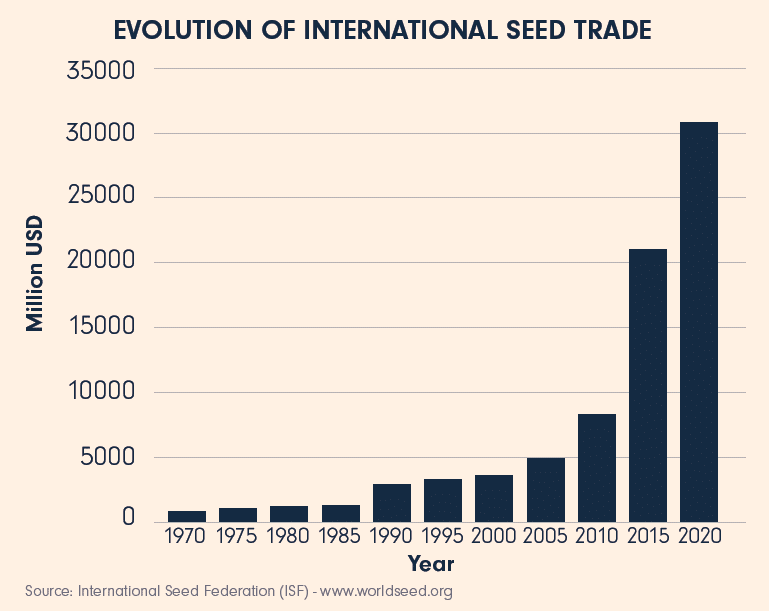
The Centennial: Current Status
ISF has had to reinvent itself on several occasions. Its roles evolved in line with — and influencing — the global developments; its structure changed to give space to the changing membership; and its staff expanded, as did its Congresses.
The activities developed during all four phases shape ISF’s current priorities: Trade Rules and Arbitration (Phase 1), positioning the sector in global institutions (Phase 2), responding to evolving seed sector structure (Phase 3) and continuing global expansion of national associations (Phase 4). Roles and functions of seed associations and the ISF can be summarised as follows:
- creating platforms for members to meet and discuss issues of joint interest and identifying joint positions where possible;
- demonstrating foresight by identifying global developments that may affect the sector and proactively acting on them;
- advocating for and representing seed sector members to international policy makers, and supporting members to coherently approach their policy makers;
- regulating trade through private rules and arbitration; and
- communicating and providing members with communication tools in support of the sector’s license to produce.
National seed associations may have roles in addition to the above, but not all may perform these roles equally intensive. Some of these roles include:
- knowledge and resource sharing;
- collaboration and partnerships, notably in relation to pre-competitive research.
- talent development; and
- negotiating collective agreements with workers’ unions in some countries,
Moreover, national seed associations are different in that their relations are more direct because the policymakers who they deal with are able to decide on (a broader set of) issues and vote in the decision-making bodies that ISF primarily deals with, such as the International Union for the Protection of New Varieties of Plants (UPOV), the Convention on Biological Diversity (CBD) and International Treaty, and UN-institutions that develop broader policies.
In all cases, associations are knowledge centres where knowledge brought in by the members is matched with associations’ own knowledge of the policy processes. The secretariats of associations not only extend the needs of members to policy makers, but also ‘translate’ the policy realities to the members. Even though the associations are part of the private sector, in their day-to-day work they are positioning themselves between the members and the decision makers in ministries and parliaments.

Beyond the Centennial: 2024 – 20??
The world will continue to evolve; intergovernmental and non-governmental organisations will change and so will technology and relations within value chains. As a result of this all, business models will also change.
Technological developments in breeding and seed technology will continue, and so will agriculture itself and the diverse demands for seeds and other starting materials for the production of food, feed, flowers and an increasing range of plant-based industrial raw materials. Technology will also affect the ways that value chains operate, notably through increasing use of data and changes to the way that people communicate. Right now, we see the development of artificial intelligence and blockchain, but there will be more to come. Also, the ways policies are made will change in intergovernmental organisations in evolving geopolitical realities. ISF will therefore remain very relevant in providing a platform for the seed sector to discuss joint interests. It will also remain the face of the sector, representing the seed sector and supporting its members in a variety of ways.
What is clear is that plants will remain essential for human life and so too will seeds and the associated international exchange and trade of seeds and related knowledge. We can also predict that the diversity of plant species and the variety of demands on the seed sector will continue to require a diversity of actors working within the sector who will continue to require a platform to discuss matters and to organise collective representation and joint services. These will need to be provided at different levels, including global. However the future appears, there will be a need for the International Seed Federation, though it is certain that ISF of the future will have different functions and priorities than today, responding to and co-creating global developments. For the first phase of this new era, however, we can attempt to predict the next focus:
Opening Up to Society
Over the past century, the sector has been very good at intensifying communication among the members and with its immediate global institutions like the Organisation for Economic Co-operation and Development (OECD), the International Seed Testing Association (ISTA), UPOV and the International Treaty on Plant Genetic Resources for Food and Agriculture (ITPGRFA). In the latter years of its 100 years of existence, the importance of communicating outside its own ‘bubble’ has been increasingly recognized. This means that the first phase of the next century of ISF’s existence will be characterized by communicating beyond the seed sector and collaborating with outsiders. Important first steps in this direction have already been made. Such connections are essential for the seed sector to maintain its license to produce. Showing the societal relevance of the sector and the topics that it lobbies for rather than simply presenting immediate commercial interests of the companies it represents will increasingly dictate, not just the messages that are extended, but also the form and shape of relations with policy makers. This also means that the sector has to find partners and has to be open to the interests of such partners, both operators in the value chains and those representing societal interests.
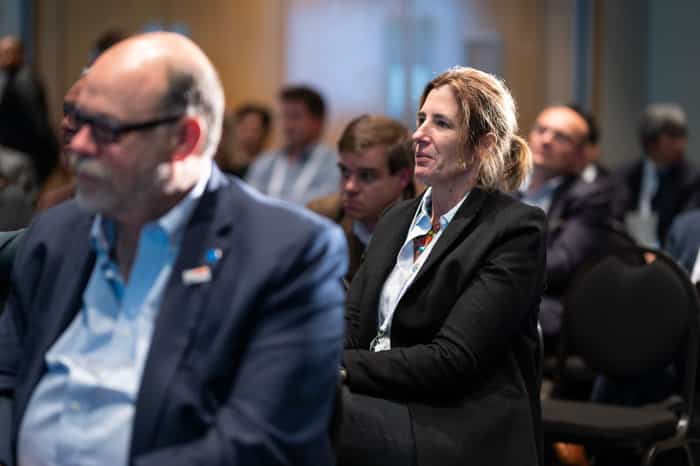
We are positioned at the start of the agricultural value chain, providing an essential input for farmers, traders, processors, retailers and eventually consumers of plant products. The interests of such value chain partners may very well coincide with ours, but conflicts of interest are part and parcel of such relations. The distribution of profits among parties in the chain is already a basic potential source of dispute, and sharing of information along the chain is not equally beneficial for all parties. Also, more fundamental differences of opinion may arise, such as is already seen with organic and small farmers associations. Still, a stronger collaboration among partners along the value chain increases understanding of the origins of such differences, at least potentially increasing opportunities to rectify the challenges, and/or strengthens the lobbying efforts and other roles of seed associations.
Opening up is also increasingly important with regards to the multitude of societal organisations. These may focus on specific or generic aspects of corporate social responsibility. The OECD guidelines for Responsible Business Conduct are increasingly part of the company strategy. For ISF to link up with global organizations that focus on such goals seems appropriate. This will not always be easy, particularly where the business model of several such organisations requires extending conflicts rather than building bridges and bringing emotions into otherwise rational debates. It thus also requires the seed sector to be open to different ways of communication and the realisation that emotions are also part of reality.
The roles of ISF have changed considerably over time. It is thus important to be open to further changes into the future. Continually adding tasks can either be done by further professionalising the staff of the secretariat and by explicitly involving the members in the collective tasks, or by prioritisation of the services. Prioritising is essential, but in associations with a diverse set of members, it is easier to add tasks than replace tasks.
The future of ISF will depend on its ability to adapt to changing seed sector and societal dynamics, leveraging technology, political landscapes and societal needs, and to provide value-added services to its members and society. The sector has an important role to produce quality seed; it will, however, need a license from society to produce seed the way we currently organise ourselves.




